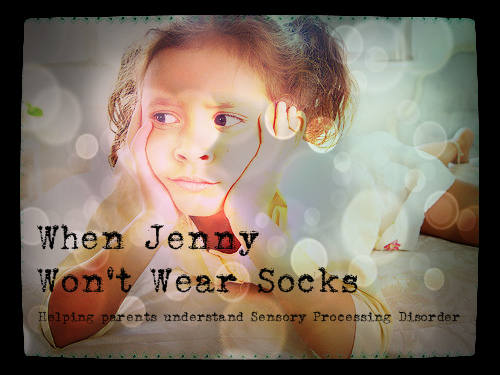• Is it a struggle to get socks on your child because the seams bug them or they are “pilly” inside?
• Does your child become upset with loud or unexpected noise? Or notice noises that most of us don’t hear (like fans, fridges, beeps or hums)?
• Does your child have a melt down when you enter the mall or any other busy place?
• Is your child PICKY eater?
• Does your child have a difficult time keeping their hands to themselves?
Maybe your child is suffering from Sensory overload and you don’t even know it.
In a nutshell, Sensory Processing Disorder is when the brain is unable to make sense of the information coming in from the environment from the things we touch, see, and smell, hear and taste. Healthy “neurosensory integration” allows us to organize and process the incoming sensations so that we feel comfortable and secure and can then respond appropriately to given social and academic situations.
Imagine driving through a rainstorm at night, the radio is blaring, your toddler is screaming in the backseat, the windshield wipers are going, and the headlights from oncoming traffic are blinding you. Now imagine you don’t know where you are or how to get where you want to go.
For kids that have Sensory Processing Disorder, this is what life can be like every day.
Some experts suggest that as many as 1 in 20 children experience SPD in some variety and intensity and this can lead to problems with learning, motor skills, behavior, social and emotional development. While SPD affects more children than ADHD or autism, it isn’t as well known. This leads to the misdiagnosis and inappropriate treatment of untold numbers of children every year. Quite often mislabeled, these kids are also called aggressive, clumsy, inattentive or “difficult”.
Here are some signs that parents can look for that might indicate their child is affected by SPD:
• Touch
o May appear anxious, controlling or aggressive
o Avoids or craves touch
o Dislikes messy play with things like paint, mud or dirt
o Irritated by certain clothing, tags, etc…
o Very active or fidgety
o Have difficulty manipulating small objects/pencil grips
• Taste
o Picky eater
o Eats inedible things like dirt, chalk or crayons
• Vision
o Has difficulty with stairs
o Poor hand-eye co-ordination
o Pain, watering eyes or discomfort when reading
o Frequent headaches or stomach aches at school
• Smell
o Susceptible to allergies
o Excessive need to smell toys, items or people
o May not like new clothes or furniture because of smell
o Behaviour changes and difficulties after cleaning days
So what can we do? As a chiropractor, the first thing I do is evaluate the child’s nervous system for spinal misalignments and nerve system interference. Adjustments along with diet, nutrition and specific play based exercises as directed by your chiropractor can help remove interference within the brain and sensory system allowing kids a better chance of being able to adapt and experience life to the fullest.
As a parent of a 9 year old boy with SPD, I understand how difficult it can be at times. My amazing son often struggles with personal space and a need to be close to me, so I bring forth all my skills as a chiropractor, sensory practitioner, and mom to support him in every way possible. My hope is that by supporting other children with SPD symptoms that life will be a little easier for these exceptional children and their parents.
Dr. Nareeta Stephenson has been in chiropractic practice for 11years and her family oriented healing centre is located in Port Coquitlam. After receiving her Doctor of Chiropractic from Macquarie University in Sydney Australia, she has continued to study prenatal, postnatal and pediatric care with the International Chiropractic Pediatric Association and Intersect 4 Kids. You can find out more information about SPD on her website at www.strawberriesandsunshine.ca
photo credit: Melissa Segal via photopin cc

